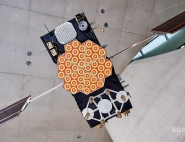A little history
How Cospas-Sarsat came into being
The Cospas-Sarsat programme was initiated in the early 1970s, in the midst of the Cold War. To be able to respond effectively to distress calls anywhere in the world, an international organization was required while leaving responsibility for the system to national administrations. To this end, four nations—the United States, the Soviet Union (today Russia), Canada and France—decided to work together despite the political tensions of the time.
Until the 1970s, maritime and aeronautic rescue systems had used VHF radio frequencies. U.S. legislation made distress beacons mandatory for the first time in 1972, and in 1975 an emergency locator beacon system was deployed for aircraft and pleasure boats—more than 250,000 beacons in total.
Birth of the programme
In 1976, Canada, the United States and France began using a Doppler detection system called SARSAT, operating on a frequency of 121.5 MHz. At the same time, Russia had started trials of an equivalent system for ships called COSPAS.
The official date on which the programme agreement was signed is 1988, but the partners had already signed up to use the system on 23 November 1979 and the Cospas-Sarsat project was launched by four institutions based in Canada, the United States, France and the Soviet Union (MDC, CNES, NASA and Morflot).
The first human lives were saved on 10 September 1982 thanks to the first satellite in low-Earth orbit—LEOSAR COSPAS-1—launched the same year (on 30 June).
24 March 1983: launch of the first LEOSAR SARSAT-1 satellite.
Operational phase
The organization became fully operational in 1985.

